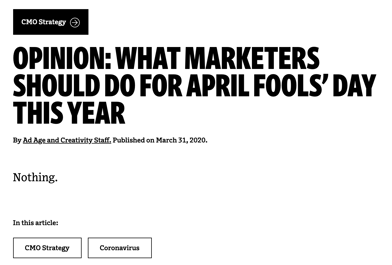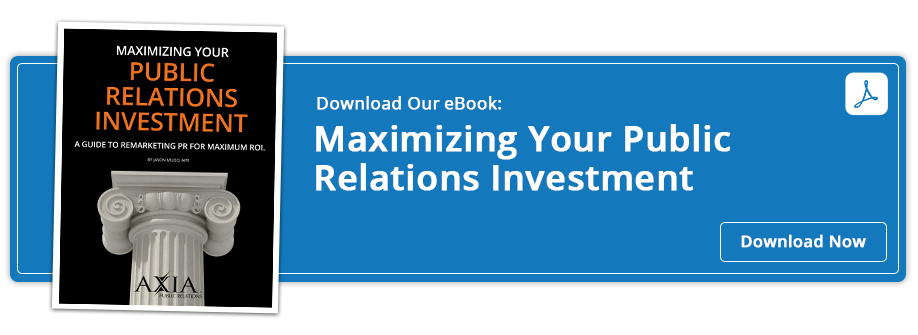(Before you think you have) Great Ideas for April Fools’ Day PR pranks
By Jason MuddNovember 2, 2020
 As marketers and public relations pros, we’ve likely all wanted to have an amazing April Fools’ Day prank as a fun way to bring attention to our brand.
As marketers and public relations pros, we’ve likely all wanted to have an amazing April Fools’ Day prank as a fun way to bring attention to our brand.
In the right circumstances, April Fools’ Day pranks can make for great PR.
In the wrong circumstances, April Fools’ Day pranks can make for really bad PR.
Even the least experienced PR professionals know, as with any joke, there are many potential April Fools’ Day pitfalls to consider. Avoiding backlash should be a top priority.
Prior to the global pandemic, the advertising and marketing industry trade media would annually celebrate clever April Fools’ Day pranks. For example, Brandwatch celebrated these 10 Best April Fools’ Pranks of 2019.
During the COVID-19 pandemic, AdAge took a firm stance in its extremely short opinion piece titled: What marketers should do for April Fools’ Day this year?
The short article simply read: Nothing.

This type of thinking is why you need a credible PR agency with experienced PR professionals advising you.
Borrowing from Jon Goldberg, my colleague from the Public Relations Society of America’s Counselors Academy, there are two types of crises: a crisis of evil and a crisis of stupidity.
- A crisis of evil: fraud, corruption, immoral behavior
- A crisis of stupidity: using poor judgment, lack of insight and experience, insensitivity messaging that offends
Goldberg and his company Reputation Architects created what they call a “Five-Minute Risk Assessment” which asks these nine important questions:
Five-Minute Risk Assessment
-
How might it be misunderstood or misinterpreted?
-
How might someone deem it offensive or insensitive?
-
How could someone co-opt it for his or her own agenda?
-
How can it be gamed or broken?
-
What does it leave to chance?
-
Have we tested every conceivable combination of inputs and outcomes?
-
Have we thoroughly run the numbers?
-
What haven’t we thought about?
-
What’s the worst thing that could happen?
Goldberg would tell you: “From a reputation risk perspective, if you're going to head down this path, my best advice is to run your idea by a diverse group of people both inside and (especially) outside your organization to see how people respond. And think carefully about how an adversary, critic, or group with an agenda could turn your prank against you. We call this the ‘jerk test.’ If the world’s biggest jerk wanted to turn the tables and damage your reputation, what would they do? Except we don't say ‘jerk.’”
Editor’s Note: Some of the content from this post came from a Public Relations Society of America open forum conversation prior to the original timing we were planning to cover this topic.
 Clients love Jason’s passion, candor, and commitment as well as the team he has formed at Axia Public Relations. He's advised some of America’s most admired brands, including American Airlines, Dave & Buster’s, Hilton, HP, Pizza Hut, and Verizon. He is an Emmy Award-winning, accredited public relations practitioner, speaker, author, and entrepreneur and earned his certification in inbound marketing. He founded the PR firm in July 2002. Learn more about Jason.
Clients love Jason’s passion, candor, and commitment as well as the team he has formed at Axia Public Relations. He's advised some of America’s most admired brands, including American Airlines, Dave & Buster’s, Hilton, HP, Pizza Hut, and Verizon. He is an Emmy Award-winning, accredited public relations practitioner, speaker, author, and entrepreneur and earned his certification in inbound marketing. He founded the PR firm in July 2002. Learn more about Jason.
Photo by Ivan Samkov from Pexels
Topics: public relations, online public relations, news media


Comment on This Article